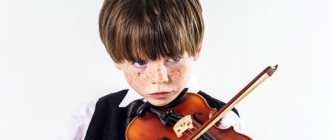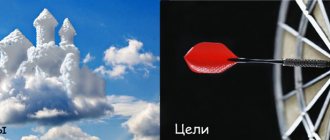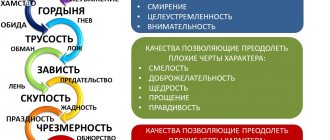Developmental education is an innovative type of children’s acquisition of knowledge, which replaced the previous explanatory and illustrated system. Developmental education is based on the active activity of the child himself. The teacher does not convey ready-made knowledge, but “teaches how to learn”: forms cognitive independence, develops abilities, promotes the development of ideas and moral beliefs, and an active position in life. Developmental education is a popular direction today, within the framework of which several original concepts are considered. One of them is the Elkonin-Davydov theory.
The essence and purpose of the theory
Daniil Borisovich Elkonin and Vasily Vasilyevich Davydov are domestic teachers and psychologists who began to develop their concept in 1959, and in 1995-1996 achieved that their theory of developmental education was recognized by the state education system in primary schools. And although the original system is focused on primary grades, ideas are currently being developed for its implementation at all levels of education. The Elkonin-Davydov concept has gained worldwide fame and popularity.
The issue of the connection between training and development has been actively studied since the 30s of the 20th century. Even then, scientists split into two camps: some rejected the influence of training on development and denied the very fact of the possibility of developmental training. The other camp recognizes the phenomenon of developmental learning.
Developmental education involves:
- the child’s involvement in various activities;
- use of games and discussions;
- enrichment of creative imagination, thinking, memory, speech.
Training is conducted according to individual, age and personality characteristics. The program is structured in such a way as to be slightly ahead of the child’s actual development, that is, it is aimed at immediate development, stimulates, accelerates and directs it.
Educational tasks gradually become more complex, which requires the child to find new ways of solving them that were not previously known. The training scheme is “goal, means, control.” For successful learning, a child must independently regulate educational and cognitive activity in accordance with a given goal. Naturally, the goal must be understood by the student himself.
The Elkonin-Davydov concept ensures the harmonious and holistic development of the individual. It is focused on revealing internal potential and hidden capabilities. The goal of the system is “to provide optimal psychological and pedagogical conditions for the development of a child as a subject of educational activity, interested in self-change and capable of it.” That is, training involves a further transition to self-development and self-education, the ability of an individual to look for problems and set goals, and find ways to solve them.
What is “Learning activity”
Anna Spirkanova
What is “Learning activity”
Introduction
The modern system of preschool education involves preschool preparation of children of senior preschool age, carried out in kindergartens or secondary schools. In practice, preparation for school usually comes down to solving educational problems: children are taught to read, write, count, and are given a certain amount of knowledge. However, in this case, an important indicator of readiness for schooling is overlooked - the desire and ability to learn, namely the formation of the prerequisites for educational activity .
The presented study takes as a basis the concept of L.A. Wenger, V.V. Davydov and D.B. Elkonin, but also takes into account the provisions of A.P. Usova on the specific role of learning in the formation of the prerequisites for educational activity . This is due to the fact that the role of education cannot be underestimated in the development of a preschool child. In the process of learning, children acquire knowledge, their ideas are formed, and their horizons are enriched. But learning at this age should be carried out in the process of leading, i.e., play activity with its acquisitions and new formations.
1. Concept, structure, characteristics of the structural components of educational activities
Educational activity is one of the types of activities of schoolchildren and students, aimed at their assimilation through dialogues (polylogues)
and discussions, theoretical knowledge and related skills in such spheres of social consciousness as science, art, ethics, ethics, religion.
(direction of D. B. Elkonin, V. V. Davydov)
.
In classical Soviet psychology and pedagogy, educational activity is understood as a special form of social activity, mastery of methods of objective and cognitive actions.
In some other sources, educational activity is understood as a synonym for teaching, learning, teaching.
Educational activity is a specific type of learning in which the student changes his behavior, personality, cognitive sphere, feelings, will, character, abilities. This is the educational task , the solution of which leads to the formation of ideas, concepts about objects and phenomena of the external and internal world among students. The discovery of reality occurs with the help of the older generation and the collaboration of the students themselves. (D. B. Elkonin, V. V. Davydov)
.
The concept of educational activity includes criteria for the level of knowledge, skills and abilities: scientific character, consistency, strength, practical value, such as the acceptance of an educational task , independent creative decisions, self-control, self-assessment of success.
Educational activity is a set of physical, practical, speech, and mental actions. Practical, external actions are based on performance, on doing through imitation, exercise, and physical activity. Gnostic ( "gnosis"
- meaning from Greek) actions are the collection and processing of information. They can be substantive: manipulation, processing, assembly, development. These include perceptual actions, such as viewing, listening, observing, depicting, designating, describing, speaking, repeating, organizing material, highlighting semantic units, direct, inverse, cause-and-effect connections, using mental and mnemonic operations.
The following levels of the student are distinguished: passive perception and mastery of the information provided; active independent search and transformation of information; search, use of it organized from the outside.
Structure of educational activities . The following elements of educational activity : cognitive need, educational task , educational motives , educational actions , operations.
Need is a state that expresses the need for something or someone, requiring its satisfaction for existence and development, serving as a source of activity. In educational activity , this is the desire to acquire knowledge, skills, and abilities in the subjects studied, to master the laws of origin, formation of objects and subjects of the disciplines studied. This happens in the process of her organized educational activities . Awareness of the need - a visible, intended result, becomes the goal of educational activity , which is divided into a number of educational tasks , solved as actions are performed in certain conditions of activity with the help of special means, methods, methods. The specificity of the educational task is that when solving it, the student masters the general method of solving a whole class of homogeneous particular problems. The intended goal is achieved, results arise, direct and collateral, both conscious and unconscious. In this case, the main thing is the change in the student himself, his personality, and abilities.
The subjective side of educational activity is characterized and determined by the dominant motive of this activity . This motive may be preparing oneself for future adult life, self-affirmation in the student’s reference group, receiving a high grade, maintaining one’s well-being under pressure from parents, teachers, and the student body.
The dominant motive educational activity can also be an educational-cognitive motive , when educational activity is subjectively carried out for the sake of knowledge, mastery of a system of knowledge, skills, self-development and self-improvement as an individual. In this case, the objective and subjective sides of educational activity coincide , and then this activity acquires enormous socially and personally significant meaning.
to a certain activity not by any one motive, but by a combination of often contradictory motives that form the motivation for this activity . But the nature of this motivation and the nature of the activity are determined by the most significant, dominant motive, which causes, determines and directs this particular activity and not another. Behind each motive included in motivation is a certain need. Motivation is the process of converting needs into motives - incentives for certain activities . So motivation is both a set of motives for activity and the process of transforming a need into a motive that causes activity to satisfy this need.
The motive of an activity may be subjectively perceived vaguely or not at all, but what the subject wants to achieve as a result of this activity , the subject, as a rule, is aware.
Depending on the real situation, external and internal motives for educational activities . Encouragement, demand, competition, threat, group influence, expectation of benefits - these are external incentives, they push towards a goal from the outside, often this causes indifference, conflicts, tension, and failure in studies .
Internal motivation attracts one to a goal; it is associated with interest in knowledge, curiosity, the desire to master experience, and to assert oneself. This motivation is optimal, aimed at overcoming obstacles and difficulties in learning , and creates conditions for the development of personal qualities.
Learning activities constitute the process of problem solving. Actions can be material (real transformation of an object - diagrams, diagrams, drawings, etc.), speech (loud speech or external speech to oneself)
receptive (transformation of objects in terms of perception, mental
(action in the internal plane without relying on any external means)
.
If we approach the question of the structure of educational activities from the perspective of its organization, then we can propose the following structure:
A) Introductory-motivational stage, in which schoolchildren must understand and understand why. Why do they need to study this topic, what is its significance in science, what is the history of its emergence and the development of those concepts and theories that they will have to study. Students are awakened to cognitive and educational motives and interests in the upcoming educational activity .
B) The operational-cognitive stage, where students study and master the content of the educational topic , master knowledge, skills, abilities. The main educational task is divided into successive partial educational tasks and their holistic solution.
C) Control-evaluation stage, when students generalize the studied material of the topic, including it in the general system of their knowledge and skills; establish whether they have solved the accepted basic educational-cognitive task , what has been learned and what has not been learned, and why. Based on this analysis, they evaluate their activities of educational activities are adjusted .
2. Methods and techniques for increasing the cognitive activity of preschool children
The cognitive activity of preschool children should be understood as the activity manifested in the process of cognition. It is expressed in an interested acceptance of information, in the desire to clarify and deepen one’s knowledge, in an independent search for answers to questions of interest, in the manifestation of elements of creativity, in the ability to assimilate a method of cognition and apply it to other material.
We will show with specific examples the most effective methods of this group.
It has been proven that children of preschool age, especially older preschool children, are capable of such mental operations as analysis and synthesis. Based on this ability, an appropriate teaching method can be applied.
Imagine that children are looking at a picture that shows a builder with a construction tool against the background of a house being built. The teacher asks to name the signs by which the children determined the person’s profession. Such an elementary analysis is a necessary starting point for a more complex, causal analysis, which allows us to consider the causal relationships and dependencies between the features identified in the elementary analysis. corresponding to such an analysis helps the child understand significant, meaningful connections and relationships.
So, continuing to consider the above picture, the teacher invites the children to think about why the builder needs the trowel he holds in his hand, why the crane is so high , why it is necessary to build such a big house , who can be pleased with the work of the builder, etc. Thinking about these questions , children begin to delve into the essence of phenomena, learn to identify internal relationships, as if they see what is not depicted in the picture, and learn to draw independent conclusions.
The lesson includes tasks for comparison by contrast and similarity. Children can compare a person and an animal (how they are similar, how they are different, art, everyday life, games, food of different peoples of the world, actions, manifestations of feelings, etc. In all cases, comparison helps the formation of specific, vivid ideas, the process becomes more effective and conscious formation of an evaluative attitude towards oneself and others, towards events and phenomena of the social world.
When using this important methodological technique, the teacher in each specific case must decide with which comparison to start - with a comparison by similarity or by contrast. As psychologists prove, comparison by contrast is easier for children than comparison by similarity. The child quickly finds the answer to the questions: “What is the difference between an elephant and a wolf?”
, but it is much more difficult for him to find similarities between them.
The technique of comparison that children have mastered helps them complete grouping and classification tasks. In order to group and classify objects and phenomena, it is necessary to be able to analyze, generalize, and highlight essential features - all this contributes to the conscious assimilation of the material and interest in it.
You should start with simple tasks: “Distribute the pictures into two groups - in one, select everything that a cook needs for his work, and in the other, a doctor.” Children 4-5 years old can easily cope with this task.
The complication of tasks goes along the line of increasing the number of objects for grouping and along the line of complication of the basis for classification. For example, preschoolers are offered different objects or their images in pictures: a winter hat, a Panama hat, a toothbrush, a ball, skis, pencils. Assignment: select the items that a girl will need in the winter, a boy in the summer. Explain the solution. Now from these same items, choose those that are needed for the game, in order to be healthy, in order to tell about yourself.
It should be noted that the method of classification is more conducive to cognitive activity if it is not an end in itself, but is subordinated to some task that is close and understandable to the child: to select objects for a thematic exhibition, pictures for an album, attributes for a certain game, activity, etc. etc.
The manifestation of independence, elements of creativity, and invention are facilitated by such activities as modeling and design.
Modeling is absolutely essential when introducing children to the social world. The guys need to be taught how to make a plan map. This could be a plan map of a street, a road to a kindergarten, or a site for a kindergarten. Children learn to place objects in space, correlate them, and “read”
map.
Tasks like “LET’S MAKE A ROUTE FOR THE UPCOMING EXCURSION”
. In modeling and designing space, you can use small building materials, paper crafts, toys or substitute items.
The method of modeling and construction develops thinking, imagination and prepares the child to perceive the world map. An increase in cognitive activity is facilitated by the combination of verbal explanation, practical implementation and gaming motivation in this method.
For example, at the beginning of the school year, children, together with the teacher, are busy organizing the group: they need to determine a place for a play corner, for books, for plants and animals.
The teacher invites the children to first make a model of object placement out of a small builder and justify their proposals.
In everyday life, children ask adults a lot of questions. These questions are developed according to theme, depth, motives, and from them one can judge the direction of the child’s interests. The thought may arise that children do not need to be specially taught to ask questions; they are already inquisitive. However, unfortunately, during the lessons themselves or about their content, children, as a rule, do not ask questions to the teacher.
Why? The point, obviously, is in existing stereotypes - during the lesson the teacher asks questions, and the child only answers them.
In this case, the teacher works without feedback, he does not immerse his students in a situation of active mental activity , free expressions of children are regarded as disciplinary violations, and, naturally, they will soon lose interest in classes. Setting for “regulated activity”
It fetters the children’s thoughts, puts them in the position of performers, and not active participants in the issues discussed in class. Such underestimation of the thinking capabilities of preschoolers and fear of violation of discipline negatively affects the development of their interests and curiosity.
The ability to ask questions is necessary for both children and the teacher himself. First of all, you should think about how and what questions he poses to the children in conversations with them about what they have read, watched, and observed. It is easy to notice that the conversations are dominated by questions of a reproductive rather than problematic nature. The teacher requires the child to repeat what he has just heard, and not to think or reason.
Often such questions simply do not make sense, since the answer to them is too simple for those involved.
For example, children in the older group are shown a picture with domestic animals depicted on it. In this case, cats and kittens. The traditional question “Who is depicted in the picture?”
appropriate for younger children, but completely useless for older children who are interested in problematic, causal questions.
This refers to questions such as: “Why do kittens frolic, but an adult cat does not?”
or
“What can you call this picture in one word?”
If the teacher learns to correctly formulate his questions, then it will become clearer to him how to teach children to ask questions to an adult. You can stimulate children's curiosity with a direct sentence: “Do you want to know something else about the North Pole? Then ask, and I will try to answer you.”
It is useful to positively evaluate the very fact of posing the question or its successful formulation.
At the end of the lesson, you can specifically leave two or three minutes so that the children can ask their questions. If the teacher does this systematically, the children get used to this form of work and are ready to ask and ask. The teacher’s task is to respond quickly and intelligently to questions: answer some immediately (especially if they relate to today’s lesson, about others - say that this is the topic of the next lesson and the children will receive an answer later, for others - invite someone from guys or look for the answer in the illustrations of the book, and then together talk about what you learned.
Getting used to independently searching for answers to your questions is absolutely necessary, especially for future schoolchildren, but here the teacher is required to have tact and a sense of proportion so as not to extinguish the children’s desire to ask questions to adults.
The most important didactic principle, without the use of which it is impossible to talk about the strength of knowledge acquisition and the cultivation of feelings, is repetition. In a specific lesson, it can serve as a leading method or methodological technique. The forms of organization of repetition are different. Direct Repetition—Children are required to be able to repeat what they have learned. It occurs at the level of reproduction in the form and in the same formulations that were given during the initial perception of the material. Examples include looking at the same painting again, memorizing a poem, re-reading a work of art, or asking reproductive questions in a conversation. Such repetition is possible and useful at the end of classes, when you need to consolidate the knowledge you have just acquired. The element of direct repetition can also become a supporting, starting point in the transition to new knowledge. This type of repetition does not imply a creative attitude towards the material being learned.
Another thing is the application of knowledge in a similar situation. This form of repetition is based on associative connections that arise during the perception of new material, new objects, objects. “What does this thing look like?”
, “What Russian fairy tale does the Ukrainian fairy tale
“Rukavichka”
of?” Or: “In the last lesson, we talked about musical instruments played by people from different countries. What people does this musical instrument belong to?” Such questions force children to remember what they already know and relate this knowledge to new ones.
It happens that a child returns to already acquired knowledge in a new situation, when it is necessary to rely not on specific examples, but on previously formed generalizations.
For example, in the previous lesson, children learned that vision in humans and in different animals has its own characteristics. Now the teacher offers to solve a logical problem based on existing knowledge: “Who can see best in the dark; see something from a very high altitude; read an interesting story in a book?” This is the so-called repetition at the indirect level.
As studies have shown, good results are achieved by the method of experimentation and setting up experiments. They are especially effective for increasing cognitive activity and, as a rule, are used to familiarize themselves with living and inanimate nature, with various technical devices and instruments.
The value of these techniques lies in the fact that they enable the child to find a solution, confirmation or refutation of his own ideas.
3. Conditions for the formation of elements of educational activity in preschool children
To form the prerequisites for educational activities in preschoolers, it is necessary:
creation of the most favorable psychological and pedagogical conditions that ensure the acceptance of the role of the student, the formation of a subject of educational activity , adaptation to learning in primary school:
— personality-oriented interaction between adults and children;
— development of play activity as the most important factor in the formation of prerequisites for educational activity in preschool children ;
— balance of reproductive and research, creative activity , joint and independent forms of activity;
— ensuring the developmental nature of the subject-developing environment of the group;
— focus of pedagogical assessment on relative indicators of children’s success, stimulating the child’s self-esteem;
— increasing the competence of parents in preparing children for school.
The presence of a specially developed model, which should include a system of didactic games and game exercises with cognitive content, built taking into account pedagogical conditions:
— ensuring the development of prerequisites for educational activities and cognitive ideas;
— ensuring children’s practical activities , their cognitive activity in solving assigned problems;
- use of various forms of organizing and conducting games and game exercises (in independent activities and in classes )
;
— creating conditions for interaction between children.
In the “Program for the Development of Universal Learning Activities for Preschool and Primary General Education,” A. G. Asmolov identified four components of universal learning actions : 1) personal; 2) regulatory; 3) educational; 4) communicative.
Research by scientists has helped determine that in older preschool age a child develops the following elements of educational activity :
- the ability to determine the goal of the upcoming activity and ways to achieve it, to achieve results;
— self-control, which manifests itself when comparing the obtained result with a sample;
- ability to exercise voluntary control over the progress of activities
- ability to plan activities , focusing on its results.
Literature
1. Abdullina L. E. Interaction of a teacher with families of pupils in kindergarten. Practical guide.
2. L. G. Peterson / Ed. L. G. Peterson, I. A. Lykova - M.: Tsvetnoy mir, 2012.
3. System for monitoring children’s achievement of the planned results of mastering the approximate basic general education program “World of Discovery”
/ Trifonova E. V., Nekrasova A. A., etc. - M.: Tsvetnoy mir, 2012.
4. Vasyukova N. E., Rodina N. M. Integrated planning of educational work with children. Benefits for all age groups
5. Kasatkina E. I., Ivanenko S., Kiseleva N. Yu. et al. Experimentation games with water and sand. —Vologda: VIR0 Publishing Center, 2010.
6. Savenkov A.I. Methods of research training for preschoolers. —Samara: Educational literature : Publishing house "Fedorov"
, 2010.
7. Savenkov A. I. Development of creative thinking (workbooks)
.
—Samara: Publishing house “Fedorov”
, 2010.
8. Savenkov A.I. Little researcher. —Samara: Publishing house "Fedorov"
, 2010.
9. Preschool pedagogy. - January. 2010. – P. 7 – 12.
10. Handbook of teacher-psychologist Page. 40 – 53 No. 1, 2015
11. Fundamentals of project activities of a teacher-psychologist pp. 12 - 17 No. 11, 2014
Traditional training and the Elkonin-Davydov system
Elkonin-Davydov’s concept is contrasted with traditional education: the latter is built from the particular to the general, from the concrete to the abstract, from the individual to the whole, and developmental education is built exactly the opposite.
Traditional education develops empirical thinking, while developmental education develops theoretical thinking. What is the difference:
- Empirical thinking allows you to classify objects, group them, identify a concept common to the group and differentiate objects according to it. This type of thinking plays an important role in everyday life, allows you to organize objects and navigate the world.
- Theoretical thinking allows us to identify its genetic basis through analysis of the system. In the future, on this basis there are other items that may be included in this system. This allows you to find non-standard solutions.
Thus, empirical thinking is based on comparison, theoretical thinking is based on analysis. Comparison highlights formal similarity; objects may belong to the same class, but be unrelated. Analysis allows you to build an entire system. Theoretical thinking expands possibilities, as it allows you to look into the content of objects; empirical knowledge is based on observation and comparison of external signs.
Features of training
The basic components of thinking are analysis, planning and reflection. In the process of developmental training:
- students do not receive ready-made knowledge, but themselves find out the conditions of its origin;
- Students record the identified objects and the process of activity in the form of an abstract model.
Developmental education teaches children to solve more specific problems in a short period of time (problematic thinking develops). Training takes place in collaboration with parents and teachers through a joint search. Even the child’s minimal participation increases his confidence in his own strength. The belief is formed that knowledge is possible only within the framework of activity. The organization of creative search activities of a collective-distributive type is mandatory.
A lesson based on the developmental education system has the following features:
- discussions and games to identify problems;
- exclusion of rules, axioms, schemes (children themselves derive them in the process of activity);
- lack of grades, high-quality assessment (“well done”), which creates a positive psychological climate;
- minimum homework;
- exclusion of unnecessary knowledge - memory is not overloaded with material that is far from practice and life.
During such a lesson, children not only gain knowledge, skills and abilities, but also learn to defend their position with reason, double-check information and believe the facts, understand and take into account the position of another person, demand evidence and explanation. They consciously choose the disciplines they will learn in the future.
Learning and its types.
Learning is the process and result of individual experience. It includes both mastering new forms of behavior and changing old ones. Initially, this concept arose in animal psychology in the works of the American psychologist E. Thorndike. According to some theories, there is a single learning mechanism in humans and animals. This point of view is adhered to in behaviorism, neobehaviorism, associative theories, and Gestalt psychology. According to other scientists (including Russian ones), there are differences in the mechanisms of learning in humans and animals. Learning in humans is considered as a process of acquiring social experience in theoretical and practical activities, while learning in animals is understood as a process of changing innate species experience and adapting it to specific conditions. We do not talk about learning in cases where new behavior (or a change in old) is caused by the maturation of a function that does not depend on experience and exercise; transient mental state (fatigue, influence of medications); innate reflexes. There are three main types of learning: learning of reactive forms of behavior, learning as a result of operant conditioning, and cognitive learning. Reactive behavior is the body's reaction to a particular stimulus. Consequently, when learning reactive forms of behavior, the body passively reacts to external factors without changing them. Reactive forms of behavior include habituation (addiction), sensitization, imprinting, and conditioned reflex learning. Habituation (habituation) is a weakening of the reaction (up to its complete disappearance) to a certain stimulus r upon repeated exposure. This process performs an important adaptive function. So, if a newborn hears a loud sound for the first time, his reaction will be an increase in heart rate and a change in breathing rhythm. But if the sound does not stop, the child gets used to it and stops responding. Sensitization is the opposite process, in which repetition of a stimulus leads to increased sensitivity to it. As a result, a stimulus that does not cause a reaction with a single exposure (the buzzing of a fly, water dripping from a tap), when repeated, begins to provoke a certain behavior. Imprinting is a specific form of learning in animals. It represents a hereditarily programmed and irreversible formation of attachment to the first moving object that comes into the field of vision of a newborn animal. Currently, some pediatricians express the point of view according to which the attachment of a newborn child to his mother is also formed. However, this view is not generally accepted. As if reflex learning is also called “classical conditioning”, since historically it was discovered at the beginning of the 20th century. I. P. Pavlov. According to the scientist, conditioning can explain most acquired forms of behavior. J. Watson shared the same point of view. This form of learning is used from the very first years of a child’s life. For example, three-day-old infants demonstrate a consistent sucking response to a specific sound that accompanies the sucking process. With the help of counterconditioning, a negative conditioned response can be changed into a positive one. This approach is used to treat various types of phobias (fear of flying on an airplane, fear of certain objects or objects). People are trained to approach a situation or object that frightens them. As soon as tension appears, this approach is stopped. After repeated repetitions, the relaxation response replaces the anxiety response. There is no doubt that the conditioned reflex circuit works, but it is not applicable to the development of more complex forms of behavior (driving a car, playing football). This is possible on the basis of another type of learning - operant conditioning. The difference between this type of learning is that with operant conditioning the action is performed on the environment, while with classical conditioning the person experiences external influences from the environment. In general, in operant conditioning, behavior that is reinforced or rewarded tends to be repeated. There are three types of operant learning: trial and error, response conditioning, and observation. When learning by trial and error, a person uses various attempts to solve the problem facing him. Gradually abandoning ineffective actions, he finds the right solution. This type of learning was discovered by E. Thorndike. He used problem cages that could be opened if the cat pulled on a string. The scientist noticed that at first the cats' actions were random. However, each time the number of errors, as well as the time spent in the cage, decreased. E. Thorndike presented these results in the form of curves and derived patterns that explain the effectiveness of the trial and error method. The most important of these laws is the law of effect. It states: if an action leads to a desired result, the likelihood of its repetition increases; if the consequences of an action are undesirable, then the likelihood of repetition decreases. However, learning by trial and error is not effective enough. If new forms of behavior were discovered by chance, it would be difficult to explain the rapid acquisition of new skills. The further development of learning theory is associated with the name of B. Skinner. He believed that behavior can be influenced through learning by shaping a response. From his point of view, behavior is not always purely random. It is often formed under the influence of a reinforcing factor. Any stimulus can play its role. This approach allows us to explain the formation of complex behavioral reactions in stages. With this method, it is necessary to consistently and systematically reinforce each stage and thus lead the individual to the desired form of behavior. According to B. Skinner and other behaviorists, this is how most behavioral reactions in humans are developed. B. Skinner's typical model consists of the following components: stimulus - individual response - reinforcement. There are primary and secondary reinforcement. Primary is associated with the satisfaction of physiological needs, secondary – with the implementation of social needs. The learning machines used by B. Skinier were also based on the principles of operant conditioning. The training was carried out in small steps, the result of each step was reinforced by reward or encouragement. Modern computer-assisted programmed instruction uses many of these learning principles. In the 1990s. the application of the principles of classical and operant conditioning is called “behavior analysis.” Within its framework, various pedagogical and therapeutic programs for training or behavior correction were developed. However, proponents of the cognitive approach to motivation believe that external motivation, which is created by reinforcement, most often leads to the disappearance of internal motivation. Thus, many types of behavior, sometimes quite complex, can be explained in light of the principles of this approach. According to him, there are a number of behaviors that are acquired based on observation of other people who serve as role models. This type of operant conditioning is called “learning by observation or imitation of a model.” The theorist of this direction is A. Bandura. When learning by imitation, both pure imitation and vicarious learning can take place. Pure imitation occurs when the actions of a model are reproduced, the meaning of which is not always understood. With vicarious learning, a person learns certain forms of behavior, understanding their consequences. Since the subject in this case not only observes, but also evaluates the consequences, the cognitive sphere of the individual also takes part in this process. This brings A. Bandura’s approach closer to cognitive learning. In general, it should be noted that its supporters are trying to explain with the help of this type of learning too wide an area of human development. They tend to look for universal processes and ignore individual differences. Cognitive learning requires the participation of mental processes in processing information, after which a person makes an appropriate decision. It includes latent learning, the development of psychomotor skills, insight, and learning by reasoning. Latent learning was identified by E. Tolman. In his opinion, all signals coming from the environment are processed and transformed by the brain. At the same time, it creates a kind of maps of the surrounding reality, or cognitive maps. With their help, a person determines which reactions will be most adequate in a new situation or when familiar circumstances change. This learning is called latent because certain scattered information stored in memory is combined and used in a new situation. The development of psychomotor skills requires the creation of certain cognitive strategies necessary for the coordination and integration of their individual elements. There are several stages in the development of psychomotor skills (let's look at them using the example of the skill of playing a musical instrument). Stage 1 - cognitive. A person’s attention is directed to deciphering the musical text, rhythm, and melody. Stage 2 - associative. It is characterized by a gradual improvement in coordination and integration of various elements of the skill; the 3rd stage is autonomous. The skill becomes automatic, and the focus on its technical side decreases. This stage is optimal for creativity. When developing complex skills, reinforcement is needed not so much in the process of assimilation of new information, but in its use. Insight is the next type of cognitive learning. Insight is characterized by the fact that the solution comes suddenly. But insight is only possible if a person has already solved some problems using similar elements or has previously encountered similar situations. Learning by reasoning involves solving a problem in two stages. The first step is to review the available data and establish connections between them. At the second stage, various hypotheses are put forward regarding the solution of the problem. They are checked in the mind and as a result the correct solution is found. The hypotheses that a person builds are most often related to his experience. The richer the experience, the more diverse the hypotheses and the greater the chances of finding the right one. Cognitive learning is the most complex of the three types. In animals, such forms as the development of psychomotor skills and learning through reasoning are not found: The measure of the success of any type of learning is the activity of the individual. In addition, the quality of learning and its results are closely related to a person’s previous experience, the transfer of which can either facilitate or slow down the development of certain skills and abilities.
Psychological foundations of learning
The basic principles of the Elkonin-Davydov system include:
- differentiation of stages of learning according to the mental development of the child;
- orientation to the nearest development zone with updating the content of training;
- active activity of the child, creation of conditions for this activity, and not the transfer of ready-made knowledge;
- objectivity, that is, independent determination of the subject of study and its presentation in the form of a process, system, model, signs.
Any education in one way or another contributes to the mental and personal development of children, but not every educational system provides comprehensive and harmonious development of personality and creativity. Moreover, some types of training contribute to reverse development, that is, regression, for example, when tasks do not correspond to the age or actual mental development of the child (too simple or too complex).
Developmental training takes into account:
- neoplasms of age;
- leading activity of the neoplasm;
- content and methods of carrying out this activity;
- the relationship between leading activities and other activities;
- methods for determining the level of development of age-related neoplasms;
- connection between the levels of development of neoplasms and the characteristics of the organization of leading activities.
Developmental education is developed individually for a specific age. The classical concept is aimed at primary school age, the new developments of which are:
- educational activities with your subject;
- abstract theoretical thinking;
- voluntary control of behavior.
Traditional training cannot develop these new formations; it consolidates previously achieved functions. Sensory observation, empirical thinking, utilitarian memory (characteristic of traditional thinking) - all these are acquisitions of preschool age.
Topic 8. Problem-based and programmed learning
Problem-based learning –
a way of organizing student activities, based on acquiring new knowledge through solving theoretical and practical problems, problematic tasks in existing problem situations.
The essence of problem-based learning
is the creation of problematic situations for students, awareness, acceptance and resolution of these situations in the process of joint activities of students and teachers.
The assimilation of educational material occurs during the active search activity of students, in the process of solving a system of problem-cognitive tasks. Problem-based learning brings the child as close as possible to scientific knowledge, because the child’s activity models the activity of a research scientist: identifying a problem, putting forward hypotheses to solve it, testing hypotheses in the course of research activities, formulating conclusions about confirming or refuting hypotheses.
Problem-based learning achieves the following goals:
:
1. to form in students the necessary system of knowledge, skills and abilities;
2. achieve a high level of development of schoolchildren, development of the ability for self-learning and self-education;
3. to form a special style of mental activity, research activity and independence of students.
The main element of problem-based learning is a problem situation. Problem situation
- this is
a special psychological state
of a student that arises in the process of solving a task for which he does not have ready-made means and which requires the acquisition of new knowledge about the subject, methods or conditions for completing the task. The condition for the emergence of a problem situation is the need to reveal a new attitude, property or method of action.
Into the structure of the problem situation
There are three main components:
1. cognitive need
in a new unknown relation, method or condition of action;
2. unknown
, which must be disclosed in the problem situation that has arisen;
3. intellectual abilities of students
in completing the assigned task, in analyzing conditions and discovering the unknown.
Neither a task that is too difficult nor too easy will cause a problem situation.
The first sign of a problematic situation in learning is that it creates a difficulty that the student can overcome only as a result of his own mental activity. It is important to take into account the dual role of the problem situation in learning. For a student who is poorly theoretically prepared, a problematic situation has a negative effect, depresses, disorganizes, causes a state of dissatisfaction, tension, difficulty, and a negative attitude towards the task being performed, which may be the reason for the student’s failure. On the contrary, it stimulates a well-developed schoolchild to search, activates, causes a state of emotional uplift, interest in learning, and contributes to the development of an adequate self-esteem by the student of his intellectual capabilities.
Rules for creating problem situations.
1. The student must be given a practical or theoretical task, during which the student must discover new knowledge or actions to be learned.
2. The problem task offered to the student must correspond to his intellectual capabilities.
3. The problem task must precede an explanation of the educational material to be mastered.
4. Educational tasks, questions, practical tasks, etc. can serve as problem tasks.
5. The teacher must formulate the problem situation that has arisen by pointing out to the student the reasons for his failure to complete the assigned educational task.
Depending on the activity of the teacher and student, three levels
problem-based learning.
| Level | Teacher's actions | Student actions |
| 0 | Prepares children to experience a problematic situation, puts forward a problem, formulates it, and actively participates in solving it. | Remembers the solution to a problem. Occasionally participates in problem resolution. |
| 1 | Prepares children to understand a problem situation. He poses a problem and formulates it. During the decision process, he acts as a consultant (asks leading questions, provides the necessary information). | Actively participates in problem resolution. |
| 3 | Poses a problem | Formulates a problem and solves it. |
| 4 (heuristic) | Conducts general organization and control. Serves as a consultant (at the student's request). | He himself discovers and understands the problem, formulates a problematic question, puts forward hypotheses to solve the problem situation, tests them, and formulates conclusions. |
To the advantages of problem-based learning
can be attributed:
1. Bringing the student closer to scientific research. Development of students' thinking abilities.
2. A discovery effect is created, which leads to the formation of cognitive motivation and cognitive interests.
3. Knowledge acquired independently is absorbed more firmly.
4. Contributes to the formation of students’ worldview, because Self-acquired knowledge more easily develops into beliefs.
Flaws
such training:
1. Large time costs compared to other types of training.
2. To capture the essence of problem-based learning, problem-containing material is needed, i.e. The content of the educational material must contain a problem. Not all content can be studied problematically.
3. To a lesser extent than other types of training, it is applicable for the formation of practical skills.
Moreover, problem-based learning is about exploring individual differences among students.
Programmed training
– this is independent and individual training according to a pre-developed training program with the help of special teaching aids (programmed textbook, computer, etc.).
With such training, each student is provided with the opportunity to study in accordance with certain individual characteristics (individual pace of learning, a special way of mastering educational material depending on the level of training).
To the basic principles of programmed learning
relate:
- subsequence,
- availability,
- systematicity,
- independence.
The training program consists of sequential steps. Each program step usually consists of three blocks:
- informational, which provides the necessary information about the knowledge or action being studied;
- control, in the form of a task for independent completion;
- manager, in which the student checks his decision and, based on the results of the check, receives instructions to move on to some next step.
Thus, the student cannot receive the next piece of information if he does not fulfill the previous requirements; constant feedback is provided.
Depending on the nature of the program steps, there are two types of programming.
1. Linear programming system
(according to B. Skinner).
Students go through all the steps of the training program sequentially in the order in which they are given in the program. After completing the test task, the student checks it with the correct one. If the student's answer is correct, he should move on to the next step; If the answer does not match the correct one, the student must complete the task again. Thus, linear programming is based on the principle of error-free execution of a task. Therefore, the program is designed for the weakest student.
2. Extensive programming system
(according to N. Crowder).
Test tasks in this system consist of a task or question and a set of several answer options, among which one is correct and the rest are incorrect, containing typical errors. The student must choose one answer. If he chooses the correct answer, he receives reinforcement in the form of confirmation of correctness and instructions to move on to the next step. If he chose the wrong answer, the essence of the mistake made is explained to him, and he is instructed to return to any of the previous steps of the program or go to some side branch of the program (subroutine).
This form of programming is focused not so much on error-free action, but on understanding the reason that may cause an error.
3. Mixed programming system
generally correlates with those discussed above.
Advantages of programmed training
is:
1. Creating conditions for advancement in educational material in accordance with the individual capabilities of each student. This is especially valuable when individualizing learning when working with lagging students who need a slower pace of learning material and a return to what was previously covered.
2. Methods of rational mental action are developed.
On the other hand, excessive use of programmed training can also lead to negative results.
.
1. This is, first of all, a decrease in the development of creative abilities and productive cognitive activity.
2. Reducing the emotional background of communication between the child and the teacher, which is especially important when teaching young children.
3. Only the acquisition of knowledge embedded in the algorithm is provided, and the opportunity to obtain new knowledge is not provided.
4. Such training is applicable only for algorithmically solvable problems.
Examples of similar educational works
The influence of various types of activities on the mental development of preschool children.
... in the discipline “Psychology” The influence of various types of activities on the mental development of preschool children. Contents: The importance of psychological knowledge for teaching and raising children. Basic concepts of developmental psychology (age...
Neoplasms are developmental achievements characterized by a special type of structure...
... develops in a child during the implementation of leading activities. New formations - ... Also denotes the entire totality of the action of traditions. ... fundamental laws, development of scientific knowledge, its systematization and empirical ...
Didactics as a theory of learning: formation, subject, tasks, main categories
... subject methods, principles of organizing students' cognitive activity, principles of teaching, methods-techniques-forms of teaching, methods of monitoring and assessing knowledge, methods of organizing pair-group-collective-independent work of students, ...
The specifics of the activities of a social teacher with orphans brought up in...
... the activities of a social teacher with orphans in the psychological and pedagogical literature 1.1. The concept of orphanhood and the form of social structure of orphans and children, ... testing the hypothesis and solving the assigned problems, the following methods were used ...
Playing activities in the process of socialization of children. Role-playing games as forms...
... activities arising as a result of exercises, established methods of action” [13, p. 135]. In preschool age, children ... teach children ... activities and communication with other people. This is how a child masters speech, new knowledge...
Learning outcomes
Children who graduated from the Elkonin-Davydov program show the following average features of the development of cognitive abilities and personal qualities:
- high level of attention, attentional abilities increase (distribution of attention between several types of activities);
- memory development is close to a high level, mediated memory is at a high level, there is a regular increase in short-term, semantic, mediated memory (for fourth-graders it is significantly higher than for third-graders);
- awareness, ability to classify and generalize, and analogical thinking are at a high level among fourth-graders and at a close to high level among third-graders, that is, there is a tendency for verbal-logical thinking to grow to reach a high level in the fourth grade;
- high level of nonverbal intelligence, but the peak occurs in the third grade;
- high ability for search planning;
- imagination (originality and flexibility) is consistently at an average level, close to high;
- motivation for success;
- average level of empathy.
Graduates of the Elkonin-Davydov School are able to solve non-standard problems, find a way out of difficult life situations, independently plan and build their lives, look for new sources of information, self-develop, are capable of cooperation and work in a team, at the same time they are independent and responsible for their results. The desire and ability to learn, formed by the developmental education system, simplifies the course of adolescence and youth and helps in professional and life self-determination.
Children studying in a developmental education system are more likely to become winners of Olympiads, and their intelligence level is higher than that of their peers with traditional education. Graduates of a developmental school, as a rule, have higher self-esteem than their peers from a traditional school, and they are less susceptible to complexes.
Disadvantage of the system
Bypassing particular points of view, we can highlight only one drawback of the Elkonin-Davydov system - in practice, there is no such system for the middle and senior levels of school. Thus, after primary school, the child will have to switch to traditional education, or he will need to look for ways of private education.
Perestroika will be difficult, especially at the time of age-related crises or subject to a change of place of education, incorrect actions of teachers (suppression of the child’s independence and activity, infringement of his personality).
Decreased academic performance, maladaptation, deviations, problems in relationships with classmates, loss of educational motivation, decreased self-esteem, self-doubt, disappointment are the main risks of switching to traditional education, but there are many more of them. How the adaptation period will go can never be predicted in advance. If the transition is inevitable, then the change from developmental education to traditional education must necessarily take place under the control and support of a psychologist.
Afterword
Thus, Elkonin-Davydov’s developmental education allows children to develop abstract and creative thinking, teaches them to think broadly, ensures the unity of theory and practice and ease of transition from one to the other. The child not only gets an idea of the phenomena and structure of the world, but also understands the essence of the processes. Delving into the essence of questions maximally activates mental activity.
The teacher is not a living textbook and moral teacher with a pointer and boring monologues, but a guide to the wonderful world of science and knowledge, an assistant, an ally. As a result of such cooperation, the child grows up to be an intelligent, integral and independent person.
The system has been popular in educational institutions for several decades. Based on the author’s concept, training systems were developed by L. I. Aidarova, D. N. Bogoyavlensky, S. F. Zhuikov, A. K. Markova, V. V. Rubtsova, M. M. Razumovskaya, V. V. Repkin. The principle of developmental education is the basic principle of the modern education system. They try to take it into account and implement it at other levels of education.
Self-organization of educational activities. Personal-activity approach to learning.
Independent work is considered as the highest type of educational activity. It is a purposeful, internally motivated activity, structured by the subject himself and adjusted by him in terms of process and result. Carrying out independent work requires a high level of development of self-awareness, reflection, and self-discipline. All this emphasizes the need for special organization of independent work not only and not so much by the teacher, but by the students themselves. It should be noted that the ability to work independently is effectively formed only in students with positive learning motivation and a positive attitude towards learning activities. Meanwhile, according to V.A. Yakunin, 77% of first-year students and 13% of second-year students have a negative attitude. Therefore, the problem of developing the ability to work independently often develops into the problem of preliminary increasing educational motivation and developing interest in learning. In this regard, the methods of forming a positive attitude towards learning, proposed by A. K Markova, are of interest. These include: • techniques of a culture of reading and a culture of listening, techniques of concise and most rational writing (drawing up plans, annotations, writing theses, reviews, abstracts); • memorization techniques (structuring educational material, using special mnemonic techniques based on figurative and auditory memory); • methods of focusing attention, based on the use of different types of self-control, step-by-step checking of one’s work, identifying “units” of checking, its order; • techniques for searching for additional information (working with reference books, catalogs, dictionaries) and storing it in the home library; • methods of preparing for exams, tests, seminars and laboratory classes; • techniques for rational organization of time, alternation of work and rest, general rules of occupational hygiene (routine, walks, order in the workplace, lighting). In general, students' independent work is based on the correct organization of their educational activities in the classroom. This relates primarily to the transition from external control of the teacher to self-control of the student and from external assessment to the formation of his own self-esteem. Accordingly, the level of development of the ability to work independently depends on the joint actions of the teacher and the child, the student’s awareness of the features of this work as a specific form of activity that places special demands on its subject. To realize the possibilities of educational activity, the nature of social interaction between students and teachers and among themselves is important, which, in turn, depends on the forms of cooperation between the teacher and students. In the learning process, joint learning activities arise. In its development, it goes through several stages, which, in the course of mastering the material, lead to the formation of a single semantic field for all participants in the training, which ensures further self-regulation of their individual activities. Joint productive activity that arises when jointly solving various creative problems is considered by V. Ya. Lyaudis as a unit of analysis of personality formation - in the learning process. A system of joint activities can be considered optimal if all its components are interconnected: the relationships of students with each other and with teachers, the conditions in which educational activities take place. The personal-activity approach, assuming the organization of the learning process itself as the organization (and management) of students’ educational activities, means a reorientation of the general process towards the formulation and solution of specific educational tasks by them themselves (cognitive, research, transformative, projective, etc.). Naturally, with a personal-activity approach, the teacher will have to determine the nature of educational tasks and actions, their hierarchy, the form of presentation and organize the implementation of these actions by students, provided that they have mastered the indicative basis and algorithm for their implementation. For a teacher implementing a personal-activity approach, the main issue is the formation of not only the communicative and educational-cognitive needs of students, but also their own need to develop generalized methods and techniques of educational activities, to acquire new knowledge, skills and abilities, and to improve those previously acquired. Learning itself and pedagogical communication in the conditions of a personal-activity approach should be implemented within the framework of subject-subject interaction; KOtopoe assumes that a teacher is a person who arouses genuine interest in the subject of communication, in himself as a partner. For students, he is an informative, meaningful person, an interesting interlocutor. The second subject of interaction is the student, communication with whom is considered by the teacher as cooperation in solving educational problems. In order to form a collective subject of educational activity, the teacher must organize educational cooperation and the students themselves in the course of solving educational problems. Recommended literature 1. Zimnyaya, I. A. Pedagogical psychology /I. A. Winter. Rostov-n/D., 1997. 2. Studying the motivation of behavior of children and adolescents / ed. L. I. Bozhovich, L. V. Blagonadezhina. M., 1972. 3. Ilyasov, I. I. The structure of the learning process / I. I. Ilyasov. M., 1986. Markova, A.K. Motivation for learning and its upbringing in schoolchildren / 4. A.K. Markova, A.B. Orlov, L.M. Friedman. M., 1983. 5. Practical psychology of education / ed. I. V. Dubrovina; M., 2000. 6. Stolyarenko, L. D. Pedagogical psychology / L. D. Stolyarenko. Rostov-n/D., 2000. 7. Formation of interest in learning among schoolchildren / ed. A.K. Markova. M., 1986. 8. Yakunin, V. A. Pedagogical psychology / V. A. Yakunin. St. Petersburg, 2001. Questions for self-test 1. How do the concepts of “learning” and “training” relate to each other? 2. Describe the main types of learning. Give examples. 3. Is learning in humans different from learning in animals? 4. What is included in the subject content of educational activities? 5. Why is motivation included in the structure of educational activities? 6. What is the significance of the personal-activity approach in educational activities? Source: Educational psychology / O. P. Kotikova, N. Yu. Klishevich. - Minsk: Aversev, 2007. - 299 p. — (Higher school textbook).











